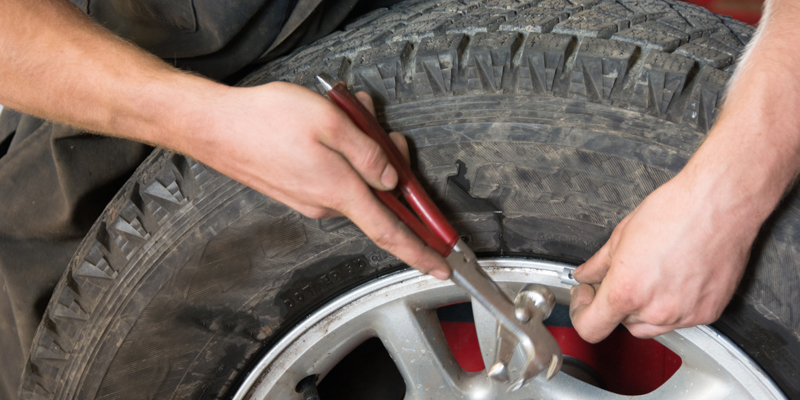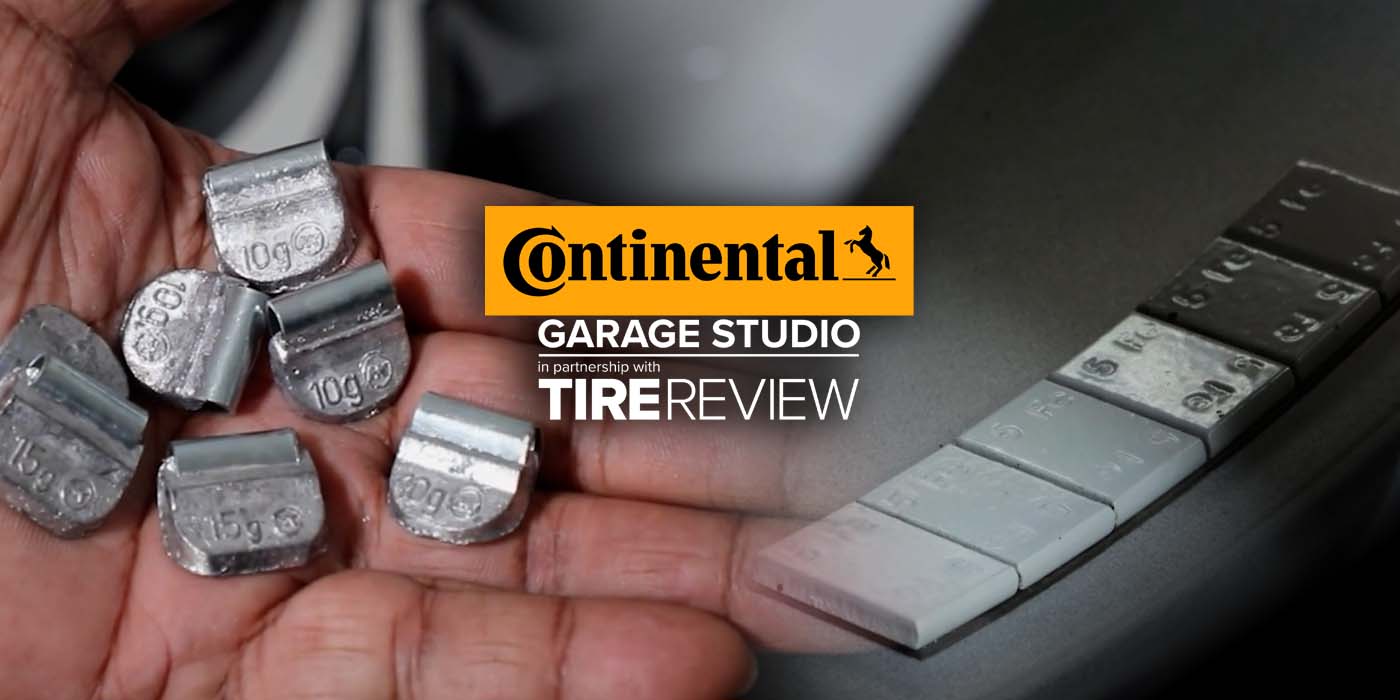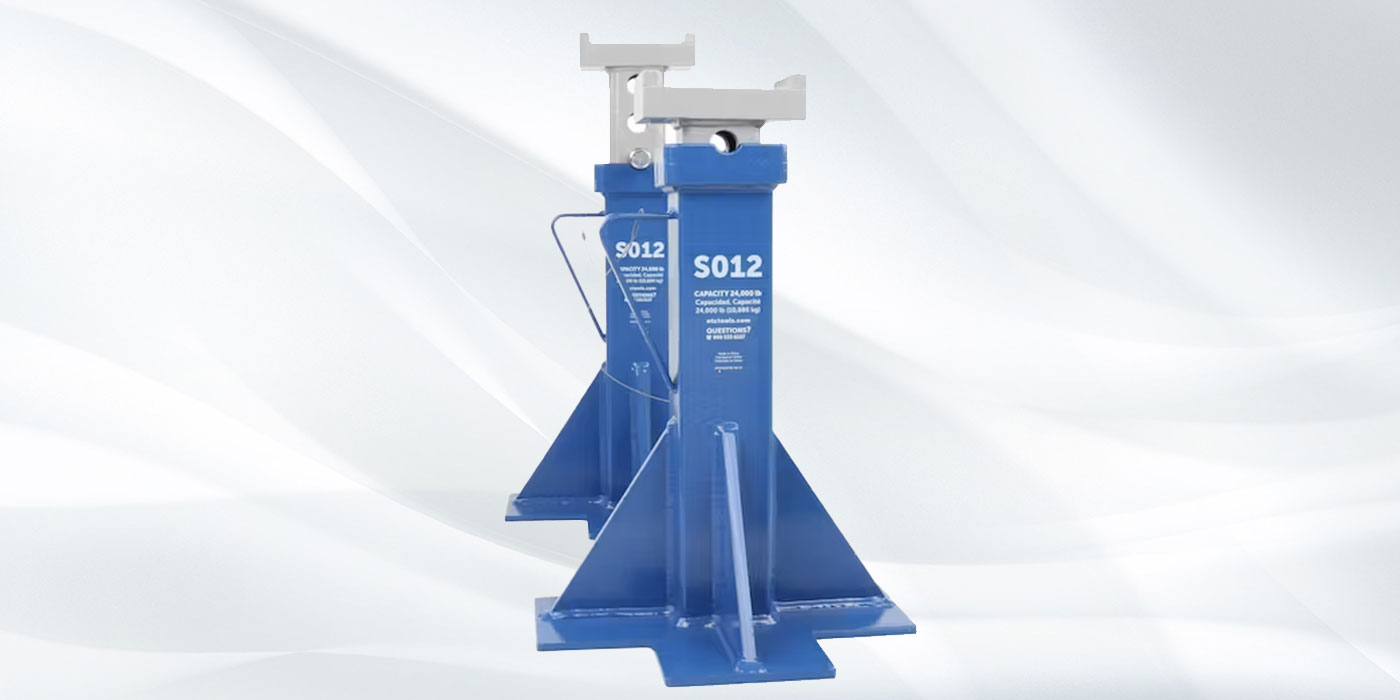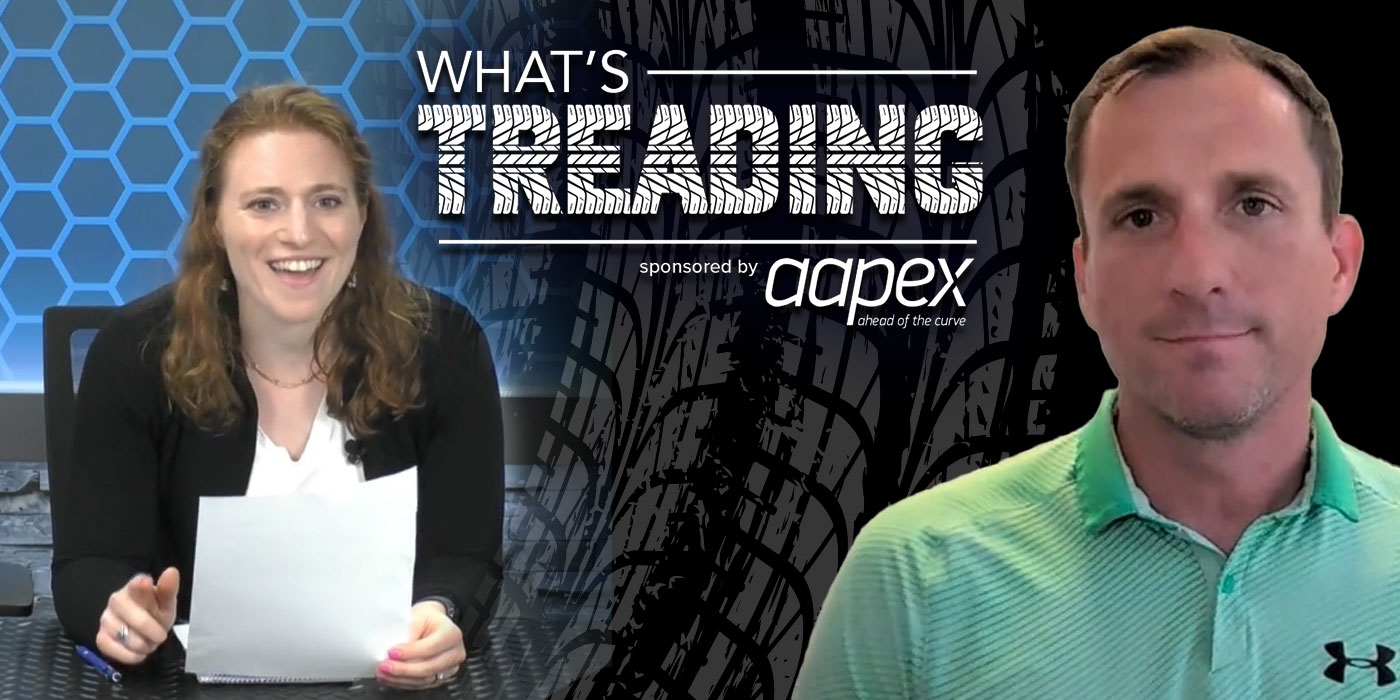Stocking wheel weights at your tire dealership is a no-brainer, but as the most inexpensive item installed on a new tire purchase, a dealer often overlooks his or her wheel weights options.
The most common types of wheel weights in use today are made from lead, steel or zinc, and are offered in adhesive or clip-on forms. All of these types of wheel weights will balance the tires that roll out of your shop, but they all come with their own quirks.
“The key for shops is to test all the options available to them and then make an informed decision,” said Greg Parker, marketing and training director for Wegmann Automotive USA, which retails Perfect Equipment-branded wheel weights. “Finding the right balance between quality, cost and availability are the three main factors to consider. The key is to work with a supplier that has the experience and knowledge to provide you with exactly what your business needs.”
Lead
The original wheel weights made of lead go back nearly 80 years, and have long been an industry standard. However, you might not even be legally allowed to sell, distribute or service a vehicle with lead wheel weights, depending on the state you live in as more legislation is passed to counter the environmental impacts of lead wheel weights.
According to the Environmental Protection Agency and the U.S. Geological Survey, lead wheel weights are problematic due to the estimated 2,000 tons of wheel weights ground down on roadways when they fall off vehicles, thus contaminating water sources with lead. To put this in perspective, imagine 1,000 large SUVs made completely out of lead.
Despite these initial findings, the EPA is still in the active research phase it started in 2009. Action from the EPA and federal government could take up to a decade with all the red tape and changes within the administration.
Enter state governments. The lack of legislation to address lead wheel weights on a national level has prompted state governments to pass their own laws. Currently seven states have banned the use of lead wheel weights: Minnesota, California, Illinois, Maine, New York, Vermont and Washington.
Maryland was the most recent state to introduce legislation in February 2016 and joins Iowa, Wisconsin, and Rhode Island – which all have similar legislation that is still pending. Tire dealers who live in these states may want to consider non-lead options in preparation for the possible passing of these bills.
Despite state action, lead weights make up an estimated 50% of the aftermarket. Corporations have taken action on their own – General Motors, Ford, Toyota, Costco, and Wal-Mart have voluntarily eliminated the use of lead weights.
“Without national legislation, lead wheel weights will remain an active part of the market due to its wide acceptance across the nation,” said Perfect Equipment’s Parker.
According to Don Vanderheyden, director of marketing for Hennessy Ind., which manufactures Bada-branded wheel weights, when making a decision to switch away from lead to a lead alternative, there are a few factors to consider:
• Wheel weight material density, which can have an impact on size and therefore wheel balance
• Product fit, form and function when compared to a lead version
• Wheel weight material cost, including the market stability and commodity price of the material used
• Environmental friendliness, recyclability and the impact of current state practices and future regulatory concerns.
Zinc
Zinc wheel weights are malleable much like lead. Some believe zinc offers the closest replacement for lead wheel weights if your dealership is making the switch.
“Zinc is a soft material that provides a more contoured appearance on the wheel and is easier to install and remove. Zinc is used by more OEMs worldwide than any other material,” Perfect Equipment’s Parker said.
Zinc may also pose potential environmental concerns, though less so than lead. A report on alternatives to lead wheel weights and the possible contamination of runoff water released by the Maine Department of Environmental Protection stated, “Maine will not promote the use of zinc wheel weights since zinc has wildlife toxicity concerns.”
At the same time, other states such as the Ohio Department of Transportation are moving toward zinc-coated steel wheel weights for its state-owned fleets.
Steel
Steel wheel weights remain a popular option in the North American market, but aren’t as common globally. This is in part because steel has a fairly low raw material cost in America, but steel weights are often more expensive to manufacture compared to lead and zinc.
Steel in more expensive due to the timely processes it takes to turn raw steel into a usable product – conditioning the steel, cutting the steel, bending the steel, coating the steel, etc. Lead and zinc are simply melted down and molded.
Perfect Equipment’s Parker notes that steel adhesive wheel weights are becoming more attractive due to their increase in availability, quality and pricing levels. He adds that steel clip-on weights are also an option, though more elementary.
Plombco also offers a steel wheel weight covered in plastic called Plasteel. According to the company, the plastic coating keeps the clip-on wheel weight from scratching and damaging the wheels and is more malleable.
Clip-on vs. Adhesive Wheel Weights
The use of a standard clip-on wheel weight that is hammered to the outer rim of the wheel is lessening as aftermarket wheels begin to evolve and wheel weight manufacturers develop better technology to place and remove adhesive wheel weights.
“It is also important to consider that the use of steel wheels and the traditional wheel cover is declining and that the clip-on wheel weight used for steel wheels is fading,” says Emilie St-Onge, director of marketing for Plombco Inc. “The Corporate Average Fuel Economy (CAFE) standards have led to car manufacturers to find ways of reducing vehicle weight. Steel wheels are typically heavier than aluminum and alloy wheels so this is another factor in the decline of ‘clip style’ wheel weights.”
Appearance is also beginning to affect the use of clip-on wheel weights as more consumers have custom wheels installed. Many wheel weight manufacturers offer colored adhesive wheel weights to match black and chrome aftermarket wheels. Additionally, more flangeless wheels are hitting the aftermarket, driving the use of adhesive wheel weights.
“Adhesive product line is not only increasing in overall usage for standard product offerings, there is also demand for new offerings to address light truck and SUV, larger sizes, and aftermarket wheel offerings, colors, growth,” said Bada’s Vanderheyden. “To meet the challenges associated with the growth in adhesive weight usage, many wheel balancers are equipped with laser technology to guide wheel weight placement.”
Because wheel weights are not a one-size-fits-all approach, there are factors outside of environmental and cost to consider.
Think of what material and application pairing will work best for your technicians and your customers’ wheels. For example, technicians may work better with a more malleable material at first, or the number of flangeless wheels coming into the shop may steer you to stock more adhesive wheel weights.
As mentioned earlier, there are many considerations when selecting wheel weight options for your shop. It’s all about finding the right balance.
Stepping Away from Lead?
• Perfect Equipment, Plombco and Wurth all offer wheel weight lines made from zinc and steel.
• Hennessy’s Bada brand offers steel lines of wheel weights.
• IMI’s Equal and Equal Flexx offer an internal balancing solution for commercial vehicles.
• 3M wheel weights are made from an alternative lead-free material.













